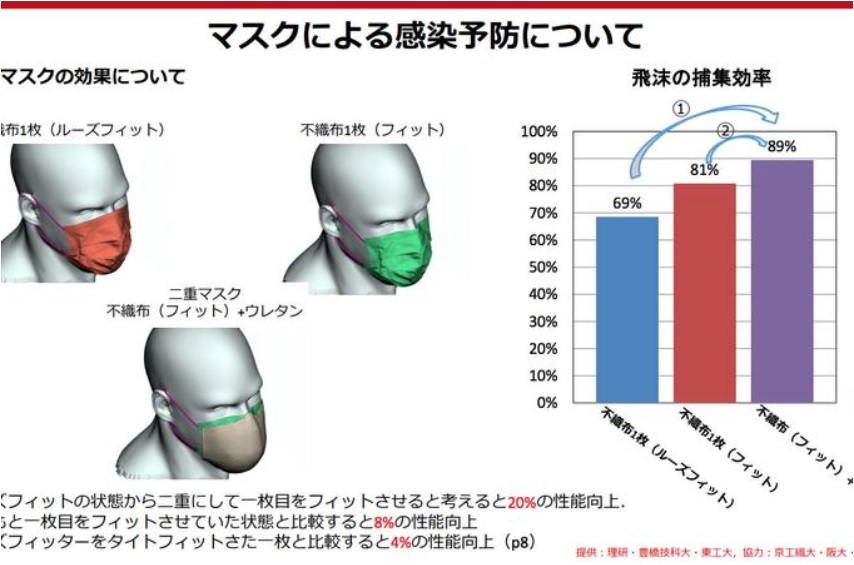Generally, a properly fitted surgical mask blocked up to 85% of the viral particles but simulations showed that adding another mask on top of that only bumps that up to an unremarkable 89%. “The performance of double masking simply does not add up,” declared lead researcher Makoto Tsubokura, according to Reuters.
In the graphics above, the red mask is a loosely worn non-woven mask while the green mask is being worn tightly around the nose and face area. Double masking is being represented by the green and brown mask combo, which consisted of a non-woven mask with a polyurethane mask on top. The results of the research are shown in the bar graph next to it, in the form of “droplet collection efficiency”. The blue bar represents the red mask while the red and purple bars are for the green mask and double masking, respectively. On another hand, the CDC recently recommended double masking based on the findings of its own research which said that the mask combo can reduce cumulative exposure by up to 96.4%. The whole idea is to push and hold the edges of the disposable mask against your face, securing it tightly in place and sealing gaps better.
— CDC (@CDCgov) February 11, 2021 The Japanese researchers should agree – they found that a loose-fitting surgery mask blocked only 69% of the particles. In short, the CDC hasn’t necessarily been proven wrong. That being said, the US government has added to the confusion by taking seemingly different positions. White House press secretary Jen Psaki said that the administration isn’t officially recommending wearing two masks according to CNN, even though the CDC is carrying that recommendation on its official website. Nevertheless, we reckoned that both research generally showed the importance of wearing your face mask properly. So, make sure that the mask can fit snugly on your face as well as being able to cover your nose and mouth at all times. (Source: Reuters, Bloomberg, CDC, CNN. Images: CDC, Riken / Reuters.)
